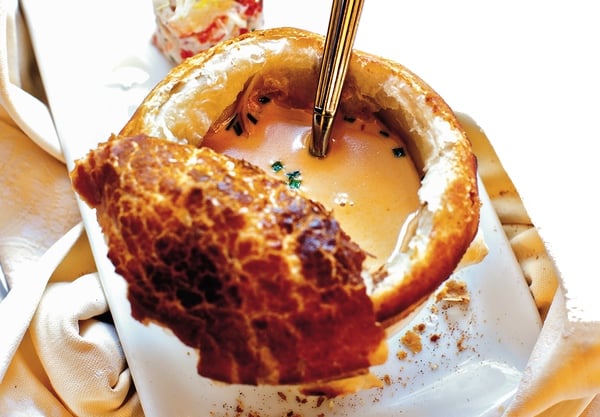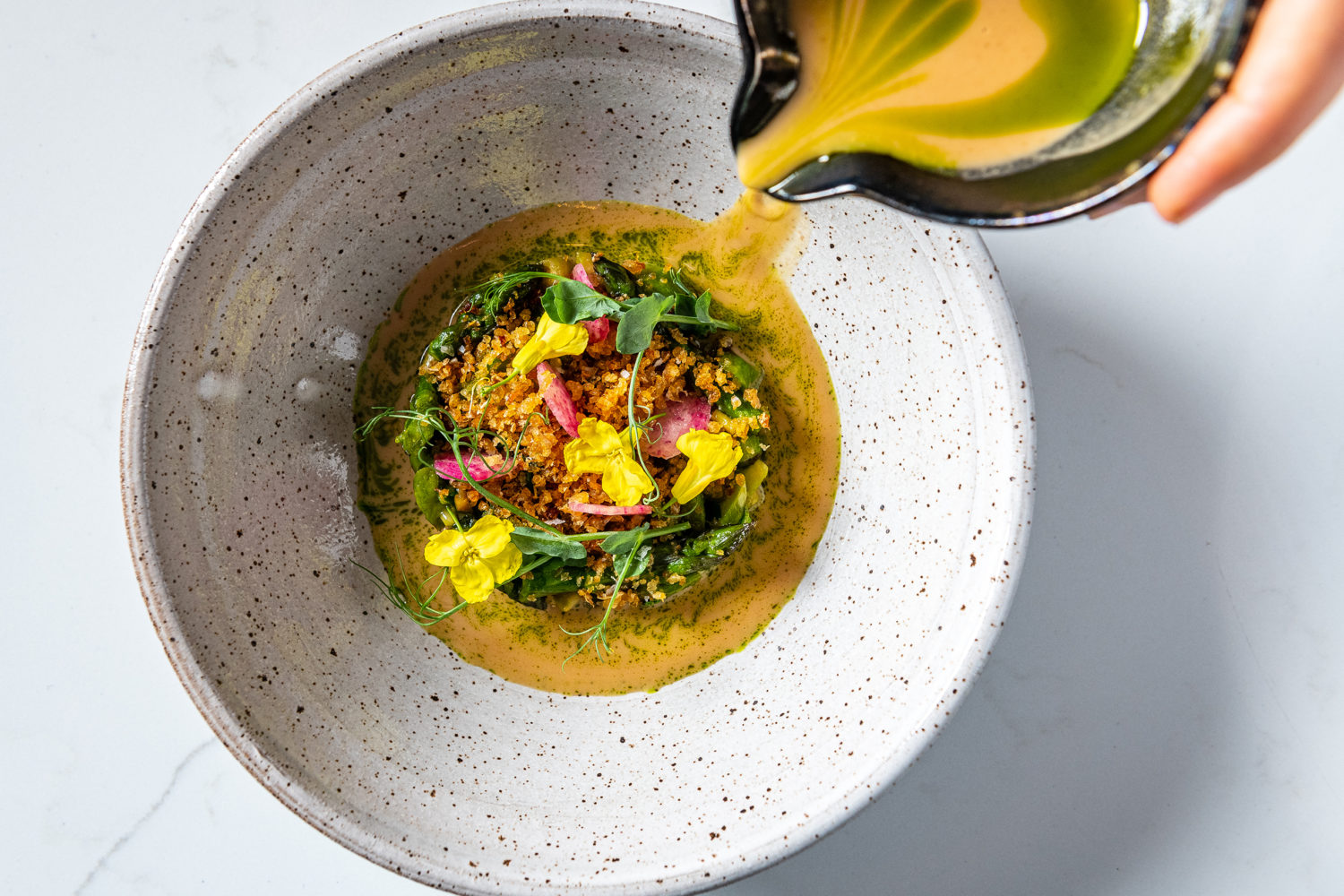June 2006 Cheap Eats
Steamed pork shank is an unprepossessing name for the stunner of a dish at this Chantilly restaurant, which two years ago relocated from Crystal City and dropped the name Formosa Café. Steamed for six hours until the bones dislodge from the meat, the pork shank glistens with a sauce of red chilies, ginger, garlic, shiitake mushrooms, Chinese broccoli, and squares of country ham.
The pork provides a precis for eating at a place where the translated names on the Chinese menu often sound blander than they are. Occasionally, they even sound unappetizing. One dish is called Ant on Tree–a spicy minced pork that clings to a tangle of house-made potato noodles.
As tempted as you might be to consider the Chinese-American buffet that keeps the place in business, you can always enlist the help of the owners' daughter, Lilly, who speaks idiomatic English and is an excellent guide for unlocking the secrets of the menu. Or you can approach each meal as an adventure as you order, sitting back and enjoying the consistently good, occasionally brilliant work that comes from the restaurant's team of cooks, all of them graduates of the renowned Sichuan Culinary College.
Street Dumplings sounds like a toss-off name for a dish as elegant as this, a bowlful of delicate dumplings stuffed with ground chicken and green onion, sprinkled with sesame seeds and bathed in a thin red-chili sauce. Green Bean Jelly With Black Pepper is likely to conjure up an unsettling image for many Americans. Keep an open mind and you'll be rewarded by a bowl of chewy, gelatinous noodles tossed with the famed Szechuan numbing peppercorns and fragrant leaves of celery.
The kitchen excels in its preparations of lamb as well as in its array of cumin-spiced dishes. That makes the cumin lamb a high-priority item, with its tender slices of meat ignited by a sauce of green chilies, green onions, and some liberal pinches of the aromatic ground seed. Seldom are you singed by the heat of any of these dishes. Rather, you're left with an insistent warmth.
One scorcher is the ma po tofu. If you've never tried this classic, which submerges cubes of tofu in a smoky red-chili sauce, this is the version to consider. The family hails from the Szechuan province, and it was a distant relative who is said to have invented the dish, preparing the tofu from scratch five times a day using well water in the back of the restaurant.













